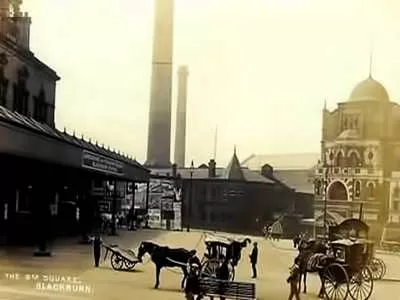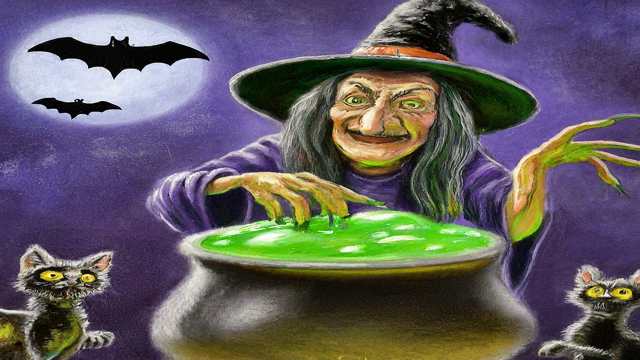When we think of Victorian novelists, names like Charles Dickens, Anthony Trollope, and Walter Scott often come to mind. These literary giants shaped the landscape of English literature with their iconic works. But nestled among them is a lesser-known yet significant figure: William Harrison Ainsworth.
While he may not be as widely recognized today, Ainsworth was once a prominent name in the literary world, particularly for his novel The Lancashire Witches, which remains a captivating exploration of witchcraft and folklore.
Ainsworth and the Rise of Historical Fiction
Ainsworth, a Manchester lawyer turned novelist, was a contemporary of Dickens and Trollope, and his works were serialized in major publications like The Sunday Times. He was paid a staggering £1,000 per novel, a testament to his popularity during the Victorian era. However, despite his success, only one of his forty-some novels has remained continuously in print: The Lancashire Witches, first published in 1849.

The inspiration for this novel came from Ainsworth’s friend James Crossley, who was the President of the Chetham Society. Crossley had republished Thomas Potts’s The Wonderfull Discoverie of Witches in the County of Lancashire (1613) in the Society’s Journal for 1845, igniting Ainsworth’s interest in the Pendle witch trials. The antiquarian societies of the time fostered a growing fascination with historical romances, and Ainsworth seized the opportunity to craft a narrative that would resonate with readers.
Researching the Pendle Witches
In 1847 and 1848, Ainsworth and Crossley traveled to Pendle to immerse themselves in the local culture and history. They visited key locations such as Pendle Hill, Houghton, Salmesbury, Cliviger, and Whalley, gathering inspiration for their writing. Ainsworth dedicated the entirety of 1848 to penning his novel, which begins in 1536 during the Pilgrimage of Grace and transitions to the 1600s, where the infamous witch trials unfold.

The novel features phonetically rendered Lancashire accents, which can be jarring for modern readers. Ainsworth’s portrayal of characters like Alizon Device—who is elevated from a commoner to a well-spoken maiden—adds a layer of drama to the narrative. The story is a classic Victorian Gothic romance, complete with aristocratic heroes triumphing over the lower classes, and even includes a cameo from King James I.
Critique and Legacy
While Ainsworth’s The Lancashire Witches was a commercial success, later critics have often dismissed his work for not adhering to modern literary standards. They criticize it for being melodramatic and stereotypical, failing to recognize that it was crafted within the conventions of its genre. Ainsworth’s novel was never intended to be a realistic or didactic account; rather, it was a thrilling tale steeped in the Gothic tradition.
The story of the Pendle witches has inspired numerous retellings, both fictional and non-fictional. Potts’s original account remains the primary source for all subsequent adaptations. Following the second outbreak of witchcraft in Pendle, Thomas Heywood and Richard Brome published The Late Lancashire Witches, which was performed at the Globe Theatre in 1634. This play capitalized on the public’s fascination with witchcraft, a theme that also influenced Shakespeare’s Macbeth and other contemporary works.
The Evolution of Witchcraft Literature
The interest in witchcraft continued into the 17th century, leading to further adaptations. Thomas Shadwell, who would later become Poet Laureate, wrote The Lancashire Witches and Teague O’Divelly, the Irish Priest (1682), a comedic take on the subject. This play was performed at the Duke’s Theatre in London and received mixed reviews, particularly for its portrayal of the Irish priest during a politically charged era.
In 1909, John Dowling Baxter introduced The Witch of Pendle, a play featuring historical figures like Queen Elizabeth and Sir Walter Ralegh. Although it was performed at the Palace Theatre in Blackburn, it has since faded into obscurity.
Another notable work is Robert Neill’s Mist Over Pendle (1951), which introduces a fictional character, Margery Whittaker, who becomes embroiled in the events of 1612. Neill’s writing captures the brooding atmosphere of Pendle Hill, evoking a sense of mystery and intrigue. However, modern editions of the book may have undergone edits, so readers are advised to seek out older copies for the authentic experience.
The Pendle Witches in Modern Culture
The legacy of the Pendle witches continues to resonate in contemporary culture. The fascination with witchcraft and the supernatural has led to a resurgence of interest in the Pendle witch trials, inspiring new adaptations in literature, film, and theater. The story serves as a reminder of the societal fears and superstitions that once gripped communities, leading to tragic consequences for those accused.
In recent years, various authors have revisited the Pendle witch trials, offering fresh perspectives and interpretations. These modern retellings often blend historical fact with fiction, creating narratives that engage new generations of readers. The enduring appeal of the Pendle witches lies in their ability to evoke a sense of mystery and intrigue, drawing us into a world where the line between reality and the supernatural blurs.
Conclusion
The story of the Lancashire witches is a rich tapestry woven from historical events, literary adaptations, and cultural fascination. From Ainsworth’s The Lancashire Witches to modern interpretations, the legacy of these trials continues to captivate audiences. As we explore the works of Victorian novelists and their contributions to the genre of historical fiction, we gain insight into the societal fears and beliefs that shaped their narratives.
Whether you are a seasoned reader of historical fiction or a newcomer to the genre, the tale of the Pendle witches offers a compelling glimpse into a world where superstition and intrigue reign supreme. So, grab a copy of Ainsworth’s novel or one of the many adaptations, and immerse yourself in the haunting history of the Lancashire witches.

